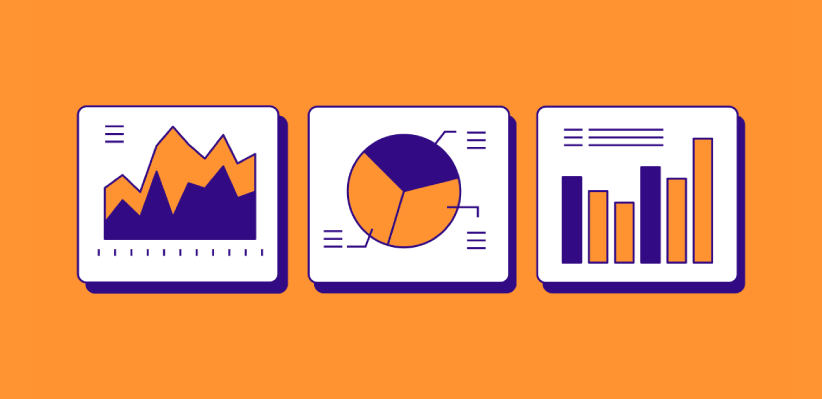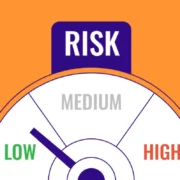
Key Metrics for Cryptocurrency Portfolio Analysis
Effectively navigating the complex cryptocurrency markets requires a solid grasp of portfolio analysis, particularly if you want to manage your portfolio actively. Cryptocurrency portfolio analysis is an essential tool for investors, providing numerous benefits for tracking and evaluating crypto investments.
This article offers an overview of the key metrics for analyzing cryptocurrency portfolios, along with practical guidance on their application.
Let’s get started!
Key Metrics for Cryptocurrency Portfolio Analysis
To evaluate a cryptocurrency portfolio accurately, investors should consider the following metrics:
- Return on Investment (ROI)
- Volatility
- Beta
- Sharpe Ratio
- Drawdown
- Correlation
Here’s a more detailed explanation of how each metric can impact your portfolio analysis.
Return on Investment (ROI)
ROI is a key metric for evaluating your crypto performance. It measures your portfolio’s performance by comparing the initial amount invested across all assets to its current value. A high ROI indicates that your portfolio performs well, while a lower ROI suggests a loss.
By tracking the ROI of individual cryptocurrencies in the portfolio, investors can assess the performance of each investment and make informed decisions about buying, selling, or holding.
Portfolio Volatility
Portfolio volatility is the degree of price changes of your investments over time. Market volatility can be caused by various factors, including changes in the crypto market, the performance of all the coins in the portfolio, and geopolitical events—a portfolio with high volatility experiences larger price swings, which could result in substantial gains or losses.
By understanding your portfolio’s volatility, you can better manage the risks and potential rewards associated with your investments. Depending on your age, time frame, and goals, you may want to take on more or less risk and diversify your investments across a range of digital assets in your crypto portfolio.
Portfolio Beta
Portfolio beta is a measure of the sensitivity of a portfolio’s returns to changes in the total market. It measures the extent to which a portfolio’s returns move in line with the broader market’s returns. A beta of 1 indicates that the portfolio’s returns move in line with the market, while a beta greater than 1 indicates that the portfolio is more volatile than the market, and a beta of less than 1 indicates that the portfolio is less volatile than the market.
Portfolio beta is a valuable metric for crypto investors to assess the risk of their portfolio relative to the overall market and adjust their portfolio accordingly to manage their risk exposure.
Sharpe Ratio
Sharpe ratio is a measure of risk-adjusted return that considers a portfolio’s volatility. It was developed by Nobel laureate William F. Sharpe and is calculated by subtracting the risk-free rate of return from the expected return of the investment and then dividing the result by the standard deviation of the investment’s returns.
By considering both risk and return, the Sharpe Ratio enables you to evaluate the efficiency of your entire portfolio in relation to its risk profile. A higher Sharpe Ratio suggests that your portfolio generates greater returns relative to the level of risk, indicating a well-optimized investment strategy.
The Sharpe Ratio is a widely used metric in portfolio analysis and can be a valuable tool for investors in evaluating the risk-adjusted returns of their portfolio.
Maximum Drawdown
Maximum Drawdown refers to the maximum percentage decline in the value of a crypto investment from its peak to its lowest point over a specific period. It’s an essential metric for an investment’s risk analysis. The Drawdown is calculated by subtracting the lowest value of an investment from its peak value and then dividing the result by the peak value.
Crypto traders and investors use the maximum Drawdown as a key performance indicator of the potential losses an investment may experience. A higher maximum drawdown means the investment has a greater potential for loss, while a lower maximum drawdown means it is relatively less risky.
Portfolio Correlation
Portfolio correlation refers to the degree of association or relationship between the returns of different assets in a portfolio. However, instead of comparing your portfolio to the crypto market, it measures how the returns of one asset move in relation to the returns of another asset in the same portfolio.
A correlation coefficient is used to measure the strength and direction of the relationship between two assets, with values ranging from -1 to +1.
A correlation coefficient of +1 indicates a perfect positive correlation, meaning that the returns of the two assets move in the same direction and magnitude. A correlation coefficient of -1 indicates a perfect negative correlation, meaning that the returns of the two assets move in opposite directions and magnitude. A correlation coefficient of 0 indicates no correlation, meaning that the returns of the two assets are unrelated to each other.
Passive investors tend to invest in larger market capitalization crypto assets like Bitcoin, as they generally have a lower risk of failure than smaller, less-known coins. However, investors willing to take on more risk and volatility may opt to include smaller market cap crypto assets in their portfolio. These coins can potentially provide higher returns during bull markets when the crypto market is generally more favorable towards riskier assets.
Correlation analysis can be considered in diversifying your portfolio and managing risk. Investing in assets with a low or negative correlation with each other can reduce your portfolio’s volatility and potentially maximize returns. On the other hand, if your portfolio’s digital currencies are highly positively correlated, the portfolio may be more vulnerable to market fluctuations and experience greater drawdowns during market downturns.
How to Analyze a Cryptocurrency Portfolio
Check out the steps on how to analyze your cryptocurrency portfolio:
1. Choose a Portfolio Tracker
Check out the available crypto trackers to choose the one that suits your needs and preferences. A crypto portfolio tracker such as the CoinStats Crypto Portfolio Tracker will help you keep track of your crypto portfolio and the entire crypto market by providing real-time market data. With new cryptocurrencies and projects emerging all the time, it’s essential to stay up-to-date on the latest developments and news in the crypto space to ensure your portfolio remains well-positioned for maximum growth.
CoinStats portfolio tracker will enable you to manage your entire portfolio – your crypto, DeFi, and NFTs directly in one place. It allows all exchange accounts from various crypto exchanges and wallets associated with your portfolio to be unified. Moreover, CoinStats’ comprehensive analytics provides the latest market insights, crypto data, and technical analysis, helping you stay on top of the market.
2. Set Up Alerts
Once you’ve selected a portfolio tracker, the next step would be to set up alerts to stay informed about significant market movements and take action quickly in the fast-paced crypto world. CoinStats portfolio tracker enables you to set customized alerts based on personal preferences like price changes, breaking news, market changes, changes in price, volume, or market capitalization of a particular cryptocurrency in your portfolio, and much more. You can also set the threshold for the alert, such as a percentage increase or decrease in price or volume. Plus, you can choose the notification method, i.e., how you want to receive the alerts, such as via email, push notification, or SMS.
3. Apply Metrics and Tools
In addition to using a crypto portfolio tracker, you can also apply several other metrics and tools to analyze your portfolio. For example, you can use coin market dominance to assess the relative strength of different cryptocurrencies within the market. Historical price data is another metric that can help you visualize the performance of individual cryptocurrencies over time to identify trends and patterns that can inform your investment decisions.
Technical analysis tools, such as moving averages, Bollinger Bands, or the Puell Multiple crypto indicator, can also be used to analyze cryptocurrency markets and identify price trends and potential entry and exit points for your investments. The Crypto Fear and Greed Index is another technical analysis tool that analyzes market sentiment and behavior using various weighted data sources, such as trading volume, market volatility, and social media activity.
Finally, fundamental analysis involves examining the underlying factors that can affect the value of a cryptocurrency, such as its technology, development team, and market adoption. This can help you make informed investment decisions based on the long-term potential of a particular cryptocurrency.
By combining these metrics and tools with your crypto portfolio tracker, you can gain a more comprehensive view of your investments and make more informed decisions.
4. Make Informed Decisions
Now that you’ve analyzed your portfolio, you can take several actions to make informed decisions about your investments. This may involve rebalancing your portfolio, adjusting your investment strategy, or setting new investment goals.
By taking a strategic approach and making informed decisions based on your analysis, you can increase your chances of achieving your investment goals in the cryptocurrency market.
Conclusion
Regular portfolio analysis is essential to engage in active crypto portfolio management. By understanding and utilizing the key metrics and analysis techniques we have outlined, you can make informed decisions to optimize your cryptocurrency portfolio. This will enable you to make necessary adjustments based on the data you collect, allowing you to manage risks and capitalize on opportunities effectively.
Remember, the cryptocurrency market constantly evolves, and keeping up with the latest tools and analysis techniques is crucial for success. As you gain experience and refine your portfolio management skills, you’ll be better equipped to navigate the volatile crypto world and make the most of your investments.






